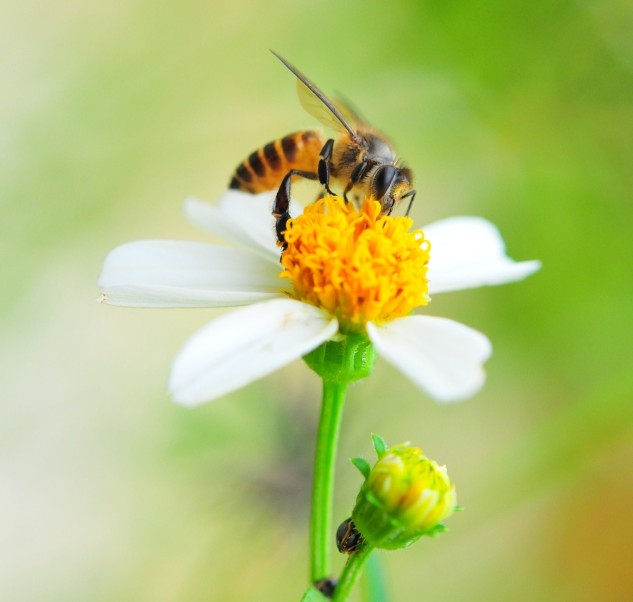(单词翻译:单击)
Nest scouts, who search for new hive locations, were three times more likely to be nectar scouts when older.
寻找新蜂巢的筑巢蜂在年老时有三倍的可能性会成为寻蜜蜂。
To determine if there are differences between scouts and non scouts, researchers examined their brains to see which genes were active.
为了确定寻蜜蜂与保育蜂是否存在差异,研究人员检查了它们的大脑,寻找哪些基因是活跃的。
What they found was surprising. There were large differences in over one thousand genes.
他们的发现出人意料。蜜蜂的上千种基因差异甚大。

Some of those genes are very similar to ones associated with human novelty seeking behavior.
其中一些基因与人类追求新奇行为相关的基因十分相似。
Scientists examined genes controlling dopamine signaling, which reinforces pleasure in humans.
科学家研究了控制多巴胺信号的基因,这种基因会增强人类的愉悦感。
In bees it works just the opposite; high dopamine reinforces aversion.
而该基因在蜜蜂体内的作用却恰恰相反;多巴胺含量高会增加蜜蜂的厌恶感。
Bees with genes that made more dopamine receptors were non scouts, while those with low receptors tended to be scouts.
携带能够分泌较高多巴胺感受器基因的蜜蜂为保育蜂,而那些产生较少感受器的蜜蜂则为寻蜜蜂。
译文为可可英语翻译,未经授权请勿转载!


